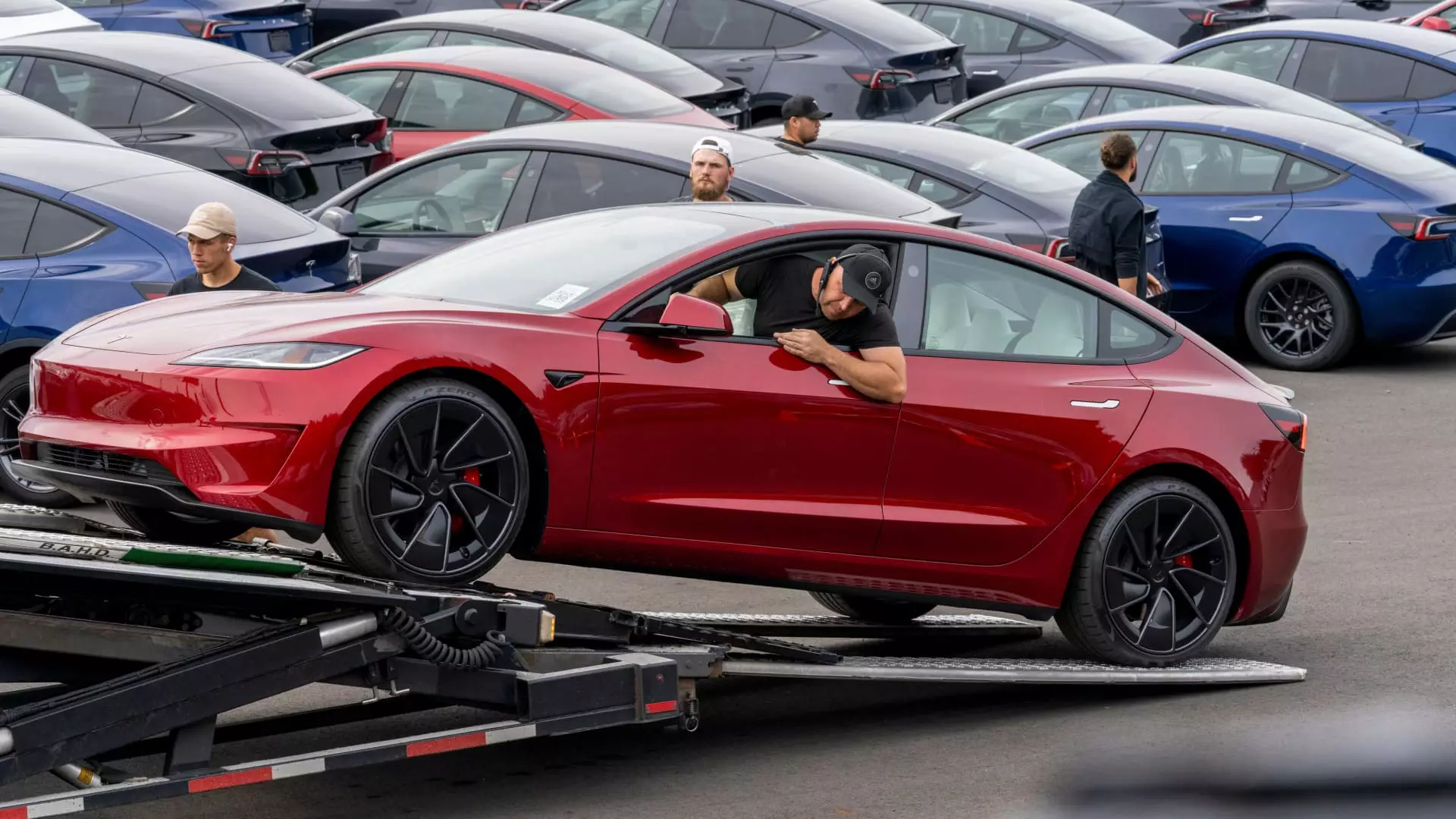In October 2024, Tesla’s third-quarter report on vehicle production and deliveries generated considerable attention within the financial markets. The numbers released showed that Tesla delivered a total of 462,890 units during the quarter, slightly missing analysts’ expectations of 463,310 deliveries as per estimates from FactSet StreetAccount. Production figures for the same period stood at 469,796 vehicles, indicating Tesla’s ability to manufacture slightly more than it was able to sell. While these figures signify robust production capabilities, they also reflect an increasingly competitive environment that poses risks to Tesla’s market dominance.
Comparing these figures to the previous year reveals a notable increase: Tesla recorded 435,059 deliveries and 430,488 vehicles produced in the third quarter of 2023. However, the sequential decline from the last quarter, where the company reported 443,956 deliveries and 410,831 produced vehicles, raises questions about demand trends and sales strategy going forward.
Shifting Market Landscape
Tesla is now operating in an arena that is markedly more competitive than it has faced in the past. The growing challenge comes not only from established automakers like Ford and General Motors, who have ramped up their electric vehicle (EV) initiatives, but also from a bevy of newer players in the market. Chinese manufacturers, including BYD and Li Auto, are making significant strides, contesting Tesla’s foothold in one of its crucial overseas markets. This surge in competition urges Tesla to reassess its pricing and production strategies, especially in regions where its once-unassailable lead has begun to erode.
In the U.S., GM has recently reported a staggering 60% increase in EV sales year-over-year, although its total volume still pales in comparison to Tesla’s impressive figures. Ford’s anticipated report on its EV performance is awaited with keen interest, as the legacy automaker has also been expanding its EV offerings. This shift in the competitive landscape represents a challenge for Tesla, calling for adaptive strategies to sustain its market supremacy.
One cannot discuss Tesla’s performance without acknowledging the significant challenges posed by CEO Elon Musk’s public persona. His controversial statements and affiliations, including support for controversial political figures and engagement in polarizing debates on social media, have had tangible impacts on Tesla’s brand value. The pressures arising from Musk’s leadership style might distract from the company’s operational goals, particularly as they wrestle with maintaining a strong customer base amid intensifying scrutiny.
Despite this, Tesla continues to outperform its competitors in terms of battery electric vehicle sales, holding a substantial lead in the U.S. market with Hyundai trailing as a distant second. The resilience of Tesla’s brand amidst Musk’s controversies underscores the loyalty and connection that many consumers feel toward the brand.
Looking ahead, Tesla has not provided explicit guidance for 2024 delivery expectations. Executives have hinted at a potentially slower growth trajectory compared to previous years—even as they introduce new models such as the much-anticipated Cybertruck. This anticipation suggests Tesla is keen on innovation even while being cautious about setting overly ambitious targets.
In addition to robust delivery figures, Tesla announced deploying 6.9 GWh of energy storage products in this same quarter, further diversifying its portfolio beyond just vehicle sales. This diversification may soon prove beneficial as the market for renewable energy continues to expand and consumers increasingly look for sustainable alternatives.
The upcoming earnings announcement will be pivotal, especially as investors turn their attention toward profit margins, given the attractive financing options and incentives Tesla has rolled out recently, particularly in China and the U.S. Furthermore, an anticipated marketing event on October 10, where Tesla is expected to unveil designs for a dedicated robotaxi, could signal the company’s long-term vision for autonomous vehicles, an area where competitors are quickly gaining ground.
Tesla’s recent delivery and production figures paint a picture of a company at an important crossroads. While the sheer volume of vehicles produced remains impressive, the evolving dynamics of the EV market and the pressures from competition necessitate a strategic recalibration. Moreover, Tesla’s ability to maintain brand strength despite exterior challenges will undoubtedly be tested in the upcoming quarters. As it prepares for the future, Tesla must not only innovate its product offerings but also consider how leadership and brand perception affect its overall market position.


Leave a Reply